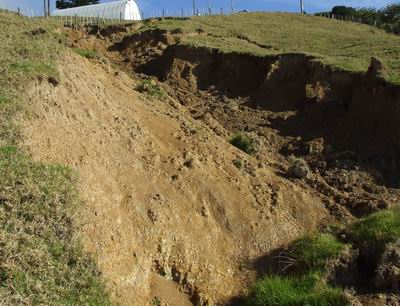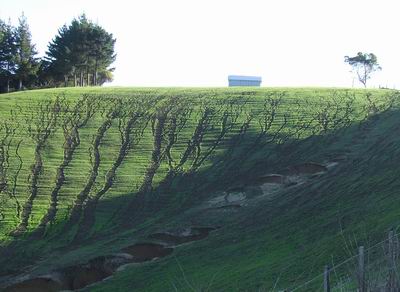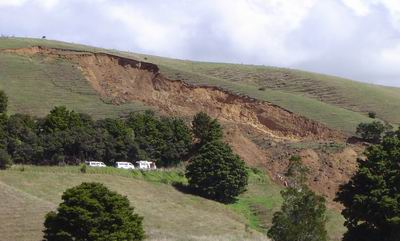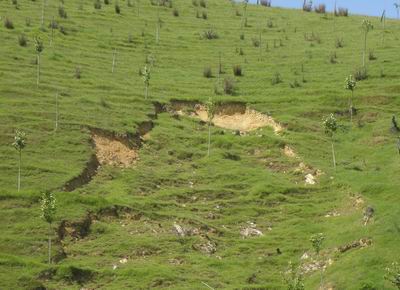Erosion control
What is erosion?
Erosion is the stripping away of soil and rock from landforms. The process creates sediment which is transported – usually by water and wind – down the slope from where it came.
The process generally occurs only now and again and is usually associated with storm events, intense rainfall and the resulting flooding.
The type of soil, climate, vegetative cover (trees versus pasture), topography and land-use practices all influence erosion.
Erosion is a natural process, but removing vegetation and poor landuse practices can speed it up.
It is estimated that erosion happens around 16 times faster when land is covered in pasture compared with native forest!
The main types of erosion
- Surface erosion – this occurs when soil particles are detached from the surface and carried across the ground by water, wind or gravity.

- Fluvial erosion – this happens when running water gouges shallow channels or deeper gullies into the soil. On sloping land the gullies can cut deep into the subsoil or undermine the surrounding soils. The sediment is washed into streams.

- Mass movement – this is the most common form of erosion in hill country, otherwise known as slips, slumps or landslides. It is most common after heavy rain or an earthquake.

Why control erosion?
Benefits to landowners
For landowners, controlling and preventing erosion will maintain the amount of land available for production.
Soil erosion significantly lowers both short and long-term production and profitability. For example, where slip erosion has occurred the land will likely only ever regain 80 percent of its former production levels.
Erosion can also impact on infrastructure – like roads or farm tracks – and result in potentially costly repairs or put farm structures at risk.
Wider benefits
Reducing erosion helps to reduce flooding and protect the health and ecology of our streams, rivers and harbours.
Eroded soils usually find their way into waterways. While soil is a natural substance, it's actually one of the most serious and common pollutants of our waterways.
The sediments can affect water quality, smother creatures and shellfish and silt up estuaries and harbours, worsening flooding problems.
Nutrients – like phosphate – and bacteria carried with the soil can also be damaging in large amounts.
How to prevent erosion
When it comes to erosion, prevention is better than cure.
There are many ways that you can help to prevent erosion from affecting your land.
- Plant appropriate tree species on hill slopes and streambanks, either native or exotic – poplars and willows are good for stabilising eroding soils.
- Fence gullies and waterways to prevent stock access.
- Control and remove wild goats, rabbits and possums – they eat the vegetation, reducing the forest health.
- Keep stock off streambanks and away from steep pasture when it's wet.
- Minimise the use of earthworks.
- Plant cover crops when land is left fallow.
- Rip wheel tracks in cultivated land where run-off and erosion along these tracks are a problem.
- Retire unproductive land and avoid cultivating steep land.
 Poplar trees planted to stabilise a slip.
Poplar trees planted to stabilise a slip.
More information
Our land management advisers can help by providing free advice – from sourcing plant material, to species selection, erosion control plans and post-planting care.
Funding assistance towards the cost of erosion control is available through our Environment Fund.
For more information please contact the Northland Regional Council on 0800 002 004.
Thanks to the following statutory authorities for providing information for this fact sheet: Waikato Regional Council, Bay of Plenty Regional Council, Hawkes Bay Regional Council, Taranaki Regional Council, Ministry for Primary Industries, Ministry for the Environment.
